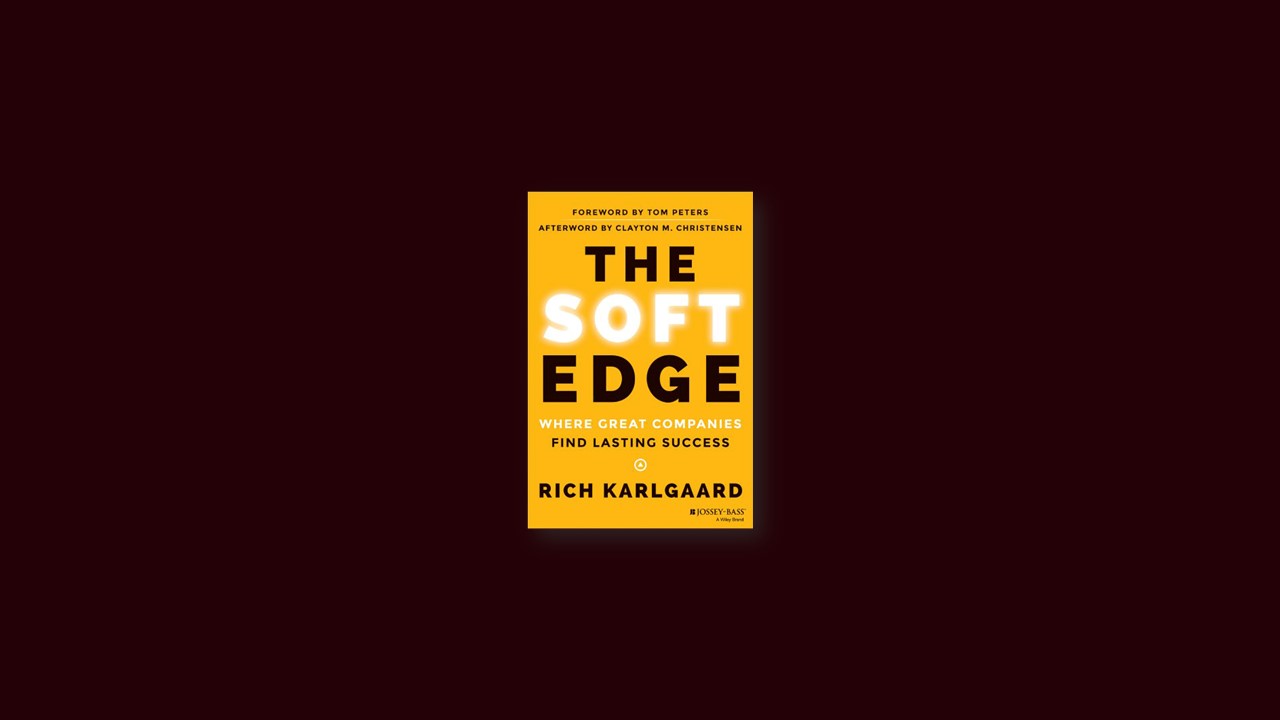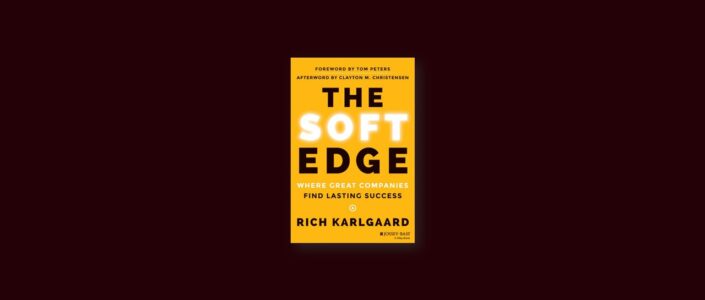How a Simple Triangle Can Predict Long-Term Health
A person with the best chances of enjoying long-term health is one who is healthy on all sides of the triangle. Such a person will possess physical health—robust energy, few illnesses, and easy mobility, whether for work or leisure.
Remove any of these social pillars—live in a war-torn country, say—and your health prospects will be jeopardized, even if you’re currently physically and mentally strong.
Seen this way, a trip around the health triangle can quickly reveal where a person would be at risk of not enjoying long-term health.
The Triangle of Long-Term Company Success
Now let’s get down to business. Suppose we drew a triangle similar to the one that predicts long-term personal health. Only this triangle would predict a company’s chances for lasting success. In its most basic form, it would look like.
The Strategic Base—Fundamental
The number one thing that every organization has to get right is strategy. You can have the best operations. You can be the most adept at whatever it is that you’re doing. But if you have a bad strategy, it’s all for naught.
Absent a viable strategy, you’re in the process of going out of business.
Market: What markets are you in now? Are they the right markets for your business? Should you enter some or exit others? What are the adjacent markets? What are the forces shaping these markets? Which of your markets are growing, and which are stagnating?
Customers: Who are your customers? Why do they buy your product? Who are your potential customers? Why have they not yet bought your product? Are your products priced right for your customers? How would your customers respond to higher prices? Lower prices?
Competitors: Who are your direct competitors? How do your competencies and products match up to theirs? Where are you better and where are you worse? What is your market position relative to theirs?
Substitutes: Who are your indirect competitors? Where would your customers go if you didn’t exist? Do these substitutes threaten to become direct competitors? Or do they suggest an opportunity for you to expand and acquire?
Disrupters: What are the technological game changers in your industry? Do you see new emerging players offering vastly cheaper or more convenient products than you can offer, even if these disrupters are not yet your direct competitors? Are these disruptive products finding new customers who were previously ignored? Are you losing valuable employees to these disrupters? When will you start to lose them?
The Hard Edge—Precise Execution
When Apple became the world’s most valuable company in September 2012—a title it lost a year later, but may yet claim again—its CEO was Tim Cook, who had been in the job for only thirteen months. Prior to that, Cook had been Apple’s chief operating officer since 2007.
Cook himself calls it the execution side. Hard-edge execution is all about managing exactly to the numbers. The people who live on the hard edge of business are good at making the trains run on time. They focus on profit. Their language is time, money, and numbers. Every company in the world needs these employees, these Tim Cook types. Companies that fail to execute precisely on the hard edge of business will ultimately fail.
These are the five pillars that undergird the hard edge:
Speed: When FedEx promises overnight delivery, it has to make it happen or the brand will suffer. The same thing goes with Amazon, which now is offering daily delivery in certain markets. The execution needed to make this happen is the sum of a lot of numbers. Are the airplanes on time? How fast is each plane unloaded? How fast are the conveyor belts moving? Speed is also crucial to new product development.
Cost: Not all companies compete on having the lowest price, but no company will succeed for long if it continually leaves money on the table because its costs are poorly managed. That’s money not available for R&D, for more salespeople, for higher bonuses for deserving employees, and for shareholders.
Supply Chain: Harvard Business School professor Michael Porter, the dean of strategy thinkers, would put suppliers into the strategy category. In his most famous book, Competitive Strategy, he asks two related questions: What leverage do your suppliers have over you? What leverage do you have over them? What has changed since Porter’s seminal 1980 book, of course, is technology that can monitor and report supply chain changes in real time.
Logistics: Norman Schwarzkopf, who was commander-in-chief of the U.S. Central Forces Command in the Persian Gulf War, told a TV interviewer, “Armchair generals talk strategy. Real generals talk logistics.”2
Logistics overlaps with supply chain, but logistics is really the how of the supply chain. Where are the trucks? What is fuel availability? How much is this costing? Are we operating fast enough? All great companies have a firm grip on their logistics.
Capital Efficiency: This hard-edge advantage is crucial to success. Are you using your capital to the best advantage? Say you are Southwest Airlines. How should you hedge your fuel purchases? This one decision can make or break airline profitability for the next five years. Or say you are a fast-growing start-up but not yet profitable. Should you raise money by issuing stock? By expanding your credit line with your bank (assuming you can)? Should you go the high-yield-bond route? Great companies think about their capital structure. Tax strategies would also fall under capital efficiency.
The Soft Edge—Expression of Your Deepest Values
The soft edge is the most misunderstood side of business. It also tends to be neglected and underfunded in too many companies. Several reasons explain this: One, the soft edge is harder to measure. Two, because it is tough to measure, it’s more difficult to attach an ROI (return on investment) figure to any investments made in it. Three, most CEOs and board chairmen are not comfortable talking in the language of the soft edge.
Trust
Trust is the foundational soft-edge advantage. It starts with two questions: Does your external market, your customers and shareholders, trust you? And two, does your internal market, your employees and suppliers, trust you?
Within an organization, trust begins with culture and values. There are reasons why companies that make the best-places-to-work lists published by magazines actually do perform better than their peers. Companies that develop trust have a recruiting advantage. They have a retention advantage and a productivity advantage. Externally, trust means that your product or service is authentic and robust enough to withstand the immediacy of today’s media. When things go wrong, customers and stakeholders believe you’ll do the right thing. Trust buys grace.
Smarts
In most technical fields, from medicine to software, formal education quickly becomes out of date. How do you keep up? How do teams and entire companies learn and become smarter over time? What is organizational smarts, anyway—processing speed, memory, pattern recognition?
But what, exactly, does it mean to be smart in the world of business? Unlocking knowledge and supporting learning are pivotal to success. But there’s another dimension to being smart: one that relates to a few old-fashioned-sounding concepts like grit, perseverance, and hard work. These traits are fundamental to accelerating learning and helping you adapt more quickly to disruptive trends.
Teams
How does FedEx’s Fred Smith manage 300,000 worldwide team members who move more than 2.5 billion packages in a year? What balance of central authority and peripheral autonomy works in such a logistically complex organization? Or why, in an entirely different industry, did German software giant SAP blow up the management framework for its 20,000-person development department and replace it with small teams?
Since collaboration and innovation are a must in the global economy, effective teamwork is vital. Yes, we humans are imperfect. We have different needs, roles, and perspectives that we bring to every interaction or team effort. But when we work together, we make each other better. We increase accountability, passion, and effort: we facilitate learning and catalyze innovation.
Taste
Taste is the word Steve Jobs used when he described Apple’s unique but universal aesthetic appeal. Jobs felt taste came from his own understanding of the yin-yang of science and humanity. The chief designer of Specialized Bicycles, Robert Egger, called it “the elusive sweet spot between data truth and human truth.” Nest Labs co-founder Tony Fadell said, “If you don’t have an emotionally engaging design, no one will care.”
During the last few decades, good design has become an increasingly valuable competitive asset. But taste is much more than just good design. It’s a universal sensibility, an emotional engagement, that appeals to the deepest part of ourselves. It’s wonderment and desire, power and control. We see it in those magical products that not only show us at our best but also make us feel and perform even better.
Story
Companies that achieve lasting success, I’ve found, have an enduringly appealing story. But now in the age of social media, the challenge has become: How do you tell your company’s story your way when customers, fans, and critics insist on telling your story their way? What if you dislike—or really hate—how outsiders tell your story?
Used both internally and externally, stories create purpose and build brand. Purpose may be a soft attribute, but it’s what gives you steel in your spine, especially when cutting corners might temporarily boost the bottom line and delight shareholders. Externally, stories are used to launch new brands and enhance the image of existing brands—a task made more difficult by today’s many new forms of communication.
Why the Soft Edge Now?
The business world is at a crossroads, where hard-edge people are dominating the narrative and discussion. For example, Wall Street is about the hard edge. It’s driven by speed, execution, and short-term capital efficiency. It dominates the way we think about free enterprise and capitalism today. Has this been good? (I’ll let you answer.)
Too many businesses leaders today, pressured by a tough economy, badgered by shareholders, find it tempting to neglect their employees’ and customers’ deeper values. Alienation and distrust are on the rise. A majority of people around the world hate their jobs. This capitalism-leads-to-alienation argument is often made by critics of capitalism. As publisher and columnist for Forbes, let me make the same point as a free-market enthusiast. We can and should do better in the way we run our companies. It will profit us in the long run if we do.
Machine rationality versus hippie humanism?
Is that even a fair fight?
Time will tell.


